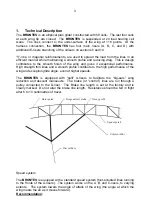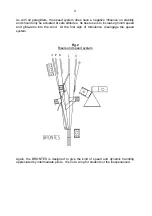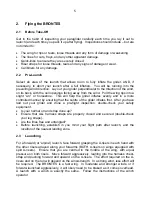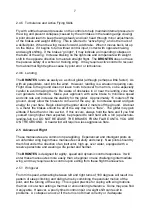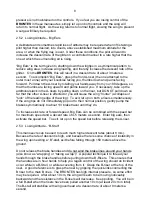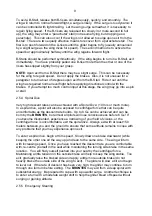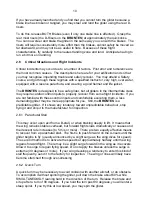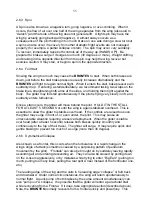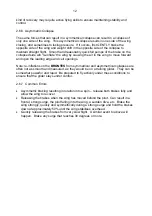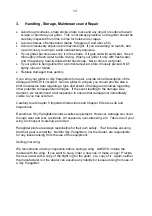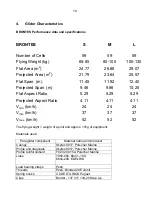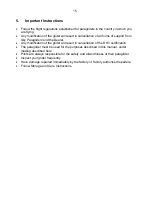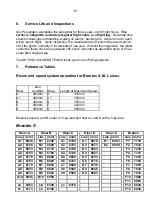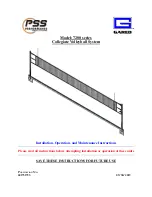
7
2.4.5 Turbulence and Active Flying Skills
Fly with a little downward pressure on the controls to help maintain internal pressure in
the wing and prevent collapses (caused by the air intakes in the leading edge closing).
A pilot should learn to keep the wing steady and over head through minor adjustments
of the brakes and weight shifting. This is referred to “active flying“, and is the mark of
a skilled pilot. When the wing moves forward, add brake. When it moves back, let up
on the brake. If it begins to turn without control input, correct with opposite braking
and weight shifting. If the brakes “go light“, it may indicate an impending collapse on
that side of the wing. Increase braking on the light side and compensate with weight
shift in the opposite direction to maintain straight flight. The
BRONTES
does not have
the passive safety of a school or training wing. It may require active control to recover
from abnormal flight regimes cause by pilot error or turbulence.
2.4.6 Landing
The
BRONTES
lands as easily as a school glider (although perhaps a little faster). As
with all paragliders, land into the wind. However, landing is a situation requiring care.
Flight close to the ground does not leave room to recover from errors, so be especially
careful to avoid making them. Be aware of obstacles in or near the landing zone that
can generate turbulence. Make your approach with some brake to minimise speed
and sink rate and increase the stability for the glider. Approximately 15 meters off the
ground, slowly allow the brakes to come all of the way up, to increase speed and gain
energy for your flare. Begin slowing the glider about 2 meters off the ground. At about
½ a meter the brakes should be all of the way down in a “flare”. The glider may gain
altitude if flared hard or into a wind. If this occurs, always hold the flare and if you find
yourself rising higher than expected, be prepared to land hard with a roll (a parachute-
landing-fall) but DO NOT RELEASE THE BRAKES FROM FLARE UNTIL YOU ARE
ON THE GROUND. A head wind will require a less aggressive flare.
2.5 Advanced
Flight
These manoeuvres are common in paragliding. Experienced and intelligent pilots on
an unfamiliar wing begin these manoeuvres carefully and slowly. New pilots should try
them first under the direction of an instructor, high up, over water, equipped with a
reserve parachute and wearing a life jacket and helmet.
The
BRONTES
is designed for agility, speed and dynamic control responses. It will
enter these manoeuvres more easily than a beginner or less challenging intermediate
wing, and may require active control upon exiting from these flight manoeuvres.
2.5.1 Wingover
From trim speed, alternating between left and right turns of 180 degrees will result in a
pattern of steep climbing and diving turns by combining the pendular motion of the
pilot, and the turning of the wing. This is good practice for coping with wing motions
that can occur when exiting a thermal or encountering turbulence. Some may also find
it enjoyable. However, a poorly timed control input or weight shift can result in
problems. A collapse can occur if the turn is not timed correctly or if adequate
Содержание BRONTES
Страница 18: ...18 ...



